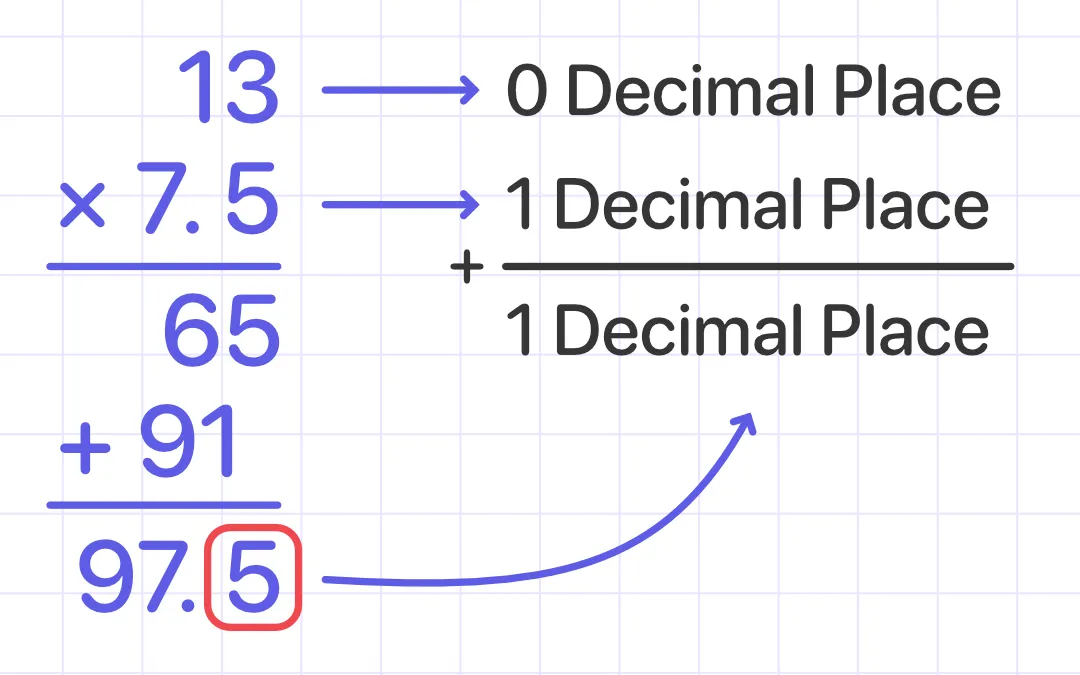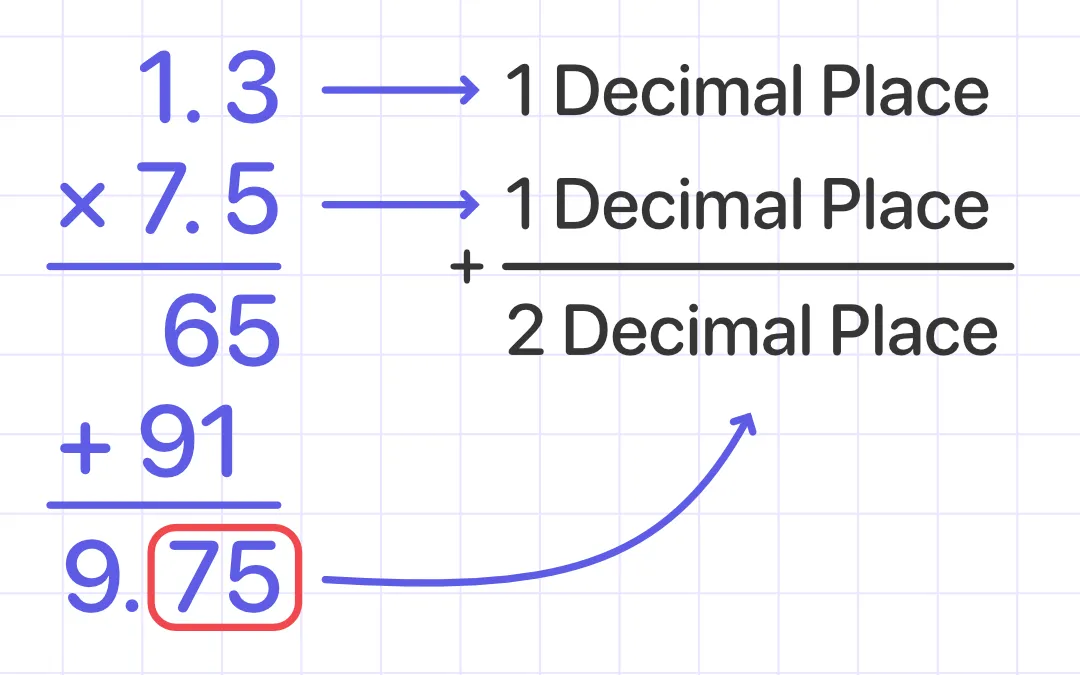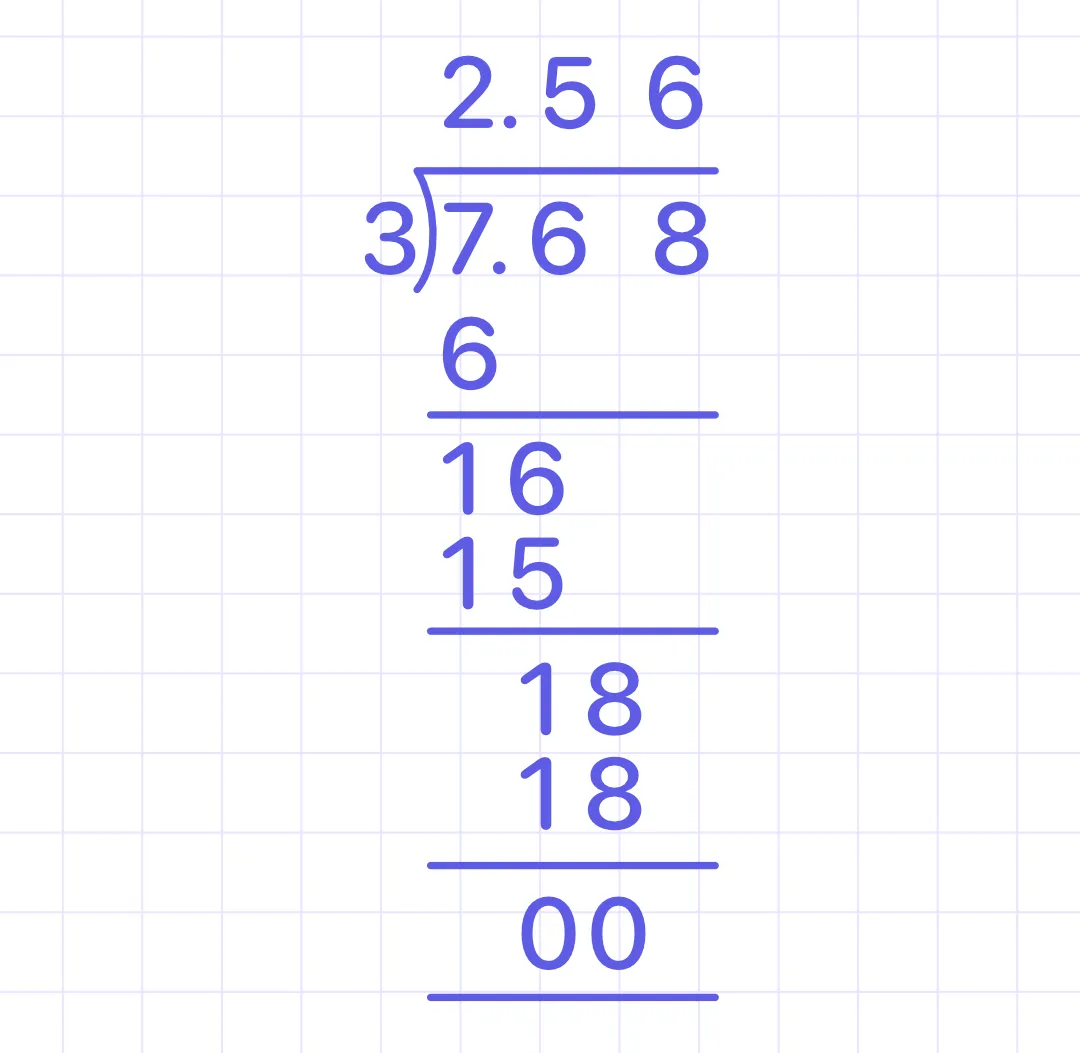MathMaster Blog
Decimal numbers are numbers that have a decimal point followed by digits that depict the fractional part. The number of digits determines the number of decimal places.
Basic operations on decimals are addition, subtraction, multiplication, and division.
Multiplying decimals and whole numbers
- Step 1: Ignore the decimal point and multiply the two numbers as usual.
- Step 2: Count the number of decimal places in the decimal number after multiplication. The number of decimal places in the product received after multiplication will be the same.
- Step 3: Write the decimal point in the obtained product in Step 2.
Example:
Find 13 x 7.5.
Solution:

Answer: 97.5
Multiplying two decimals
Example:
Find 1.3 x 7.5.
Solution:

Answer: 9.75
Multiplying decimals by 10, 100, 1000
Shift the decimal point to the right as many places as the number of zeros in the power of 10 when multiplying any decimal by 10,100,1000, etc.
Examples:
1.73 x 10 = 17.3
1.73 x 100 = 173
1.73 x 1000 = 1730
Dividing decimals by whole numbers
Divide decimals by whole numbers the same way we divide whole numbers. A divisor is a whole number, and the dividend is a decimal. Thus, the quotient will have the same number of decimals as the dividend.
Note: To divide a decimal number by a decimal number, multiply the divisor by as many tens as needed until you reach a whole number. Then, multiply the dividend by the same number of tens.
Example:
Divide 7.68 by 3.
Solution:

Answer: 2.56
Dividing decimals by 10, 100, 1000
When a number is divided by 10, we move the decimal point 1 place to the left.
86.5 10 = 8.65
When a number is divided by 100, we move the decimal point 2 places to the left:
876.345 100 = 8.76345
When a number is divided by 1000, we move the decimal point 3 places to the left.
987.5 1000 = 0.9875
Note: When there is no digit in the one’s place, we write 0 as a placeholder.